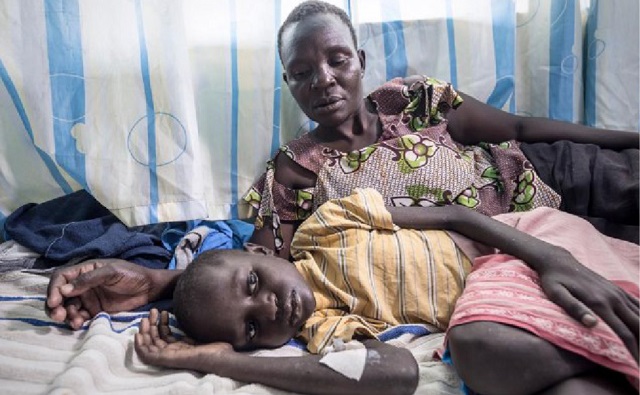
Arua, Uganda | THE INDEPENDENT | Health workers in the West Nile region attribute the high infant mortality rate in the area to the significant burden of malaria. According to the World Health Organization (WHO), infant mortality rate refers to the likelihood of a child born in a specific period dying before reaching the age of one, based on age-specific mortality rates of that period.
The latest Uganda Demographic and Health Survey (UDHS) report for 2022 reveals that the infant mortality rate in the West Nile region is 54.9 deaths per 1,000 live births, the highest in the country. Following closely are the Ankole and Bunyoro sub-regions with rates of 49.0 and 42.7 deaths per 1,000 live births, respectively.
Dr. Paul Onzubo, the Health Officer of Maracha district, points out that the alarming infant mortality rate in the region is largely due to the high prevalence of malaria, particularly among expectant mothers and children.
Dr. Dominic Lomurecu, the acting district health officer for Obongi, adds that apart from malaria, poor health-seeking behaviors among expectant mothers and undernutrition resulting from widespread poverty exacerbate the situation.
Malaria remains a significant contributor to illness and death in Uganda, constituting 33 percent of Out Patients Department (OPD) visits, 22 percent of hospital admissions, and 11 percent of deaths, as reported by the Ministry of Health.
The West Nile region ranks second, after the Karamojong region, with the highest positivity rate for malaria, standing at 22 percent according to the 2019 Uganda Malaria Indicator Survey report.
Dr. Sam Okuonzi, a public health physician and researcher specializing in health policy, economics, and financing, calls for targeted malaria prevention efforts in the West Nile region.
He suggests the distribution of first-generation Long-Lasting Insecticide Treated Nets (LLINs) as a crucial step in addressing the high infant mortality rate.
As of the latest UDHS report for 2022, Uganda’s overall infant mortality rate stands at 36 deaths per 1,000 live births.
****
URN
 The Independent Uganda: You get the Truth we Pay the Price
The Independent Uganda: You get the Truth we Pay the Price





